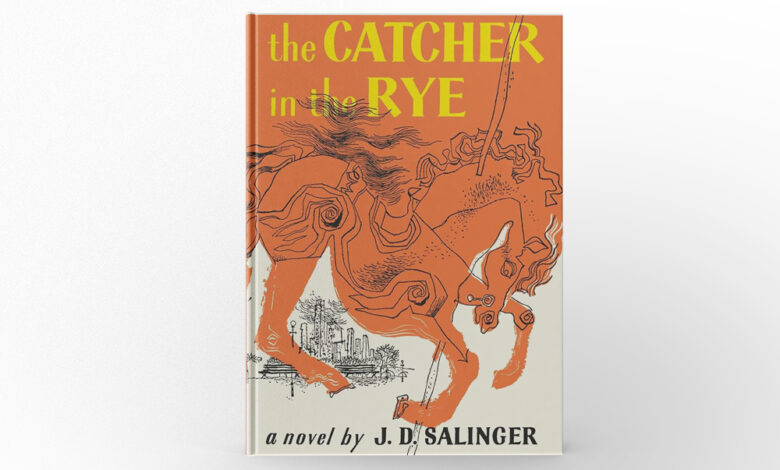The Catcher in the Rye by J.D. Salinger
The Timeless Voice of Adolescence: A Review of “The Catcher in the Rye” by J.D. Salinger

“The Catcher in the Rye” by J.D. Salinger is a seminal work in American literature that captures the essence of teenage angst and rebellion. This novel, first published in 1951, has resonated with generations of readers through its portrayal of the protagonist, Holden Caulfield, and his journey through New York City.
Author’s Background
J.D. Salinger was an American writer born in New York City in 1919. He is best known for “The Catcher in the Rye,” but his literary career includes numerous short stories and novellas. Salinger was a reclusive figure, shunning public attention and maintaining a private life away from the literary spotlight. His experiences in World War II and his struggles with fame deeply influenced his writing, imbuing his works with themes of isolation, identity, and the search for meaning.
In Depth Summary
“The Catcher in the Rye” begins with Holden Caulfield narrating his story from a mental institution. He recounts the events that led to his breakdown, starting with his expulsion from Pencey Prep, a prestigious boarding school. Disillusioned and angry, Holden decides to leave school early and head to New York City before returning home to face his parents.
In New York, Holden wanders the city, staying in cheap hotels and visiting various landmarks. He encounters a series of characters, including nuns, tourists, and former classmates, each interaction deepening his sense of alienation. Holden’s journey is marked by his constant search for authenticity in a world he perceives as phony.
One of the novel’s most significant episodes occurs when Holden visits his younger sister, Phoebe. Their bond is one of the few genuine connections in Holden’s life, and Phoebe’s innocence and honesty provide a stark contrast to the adult world’s hypocrisy. Holden’s dream of becoming “the catcher in the rye” symbolizes his desire to protect children from the corruption and loss of innocence he sees around him.
As Holden’s mental state deteriorates, he becomes increasingly erratic and paranoid. His interactions with people become more strained, and he contemplates running away and starting a new life. The novel ends with Holden in the mental institution, reflecting on his experiences and expressing a glimmer of hope for the future.
Themes and Insights
“The Catcher in the Rye” addresses several profound themes. One of the central themes is the struggle between innocence and corruption. Holden’s desire to protect the innocence of children, symbolized by his fantasy of being the catcher in the rye, reflects his deep-seated fear of the adult world’s moral decay.
Another significant theme is the search for identity and belonging. Holden’s journey through New York City is a quest for self-discovery and a place where he feels he belongs. His constant feelings of alienation and his disdain for societal norms highlight the challenges of adolescence and the struggle to find one’s place in the world.
The novel also explores the theme of mental health. Holden’s erratic behavior and emotional turmoil are indicative of his underlying psychological issues. Salinger’s portrayal of Holden’s mental state provides a nuanced and empathetic depiction of the complexities of mental illness.
Personal Reflections
Reading “The Catcher in the Rye” is an introspective and thought-provoking experience. Salinger’s eloquent prose and deep empathy for his characters make the reader feel intimately connected to Holden’s journey. The novel prompts readers to reflect on their own experiences of adolescence, identity, and the search for meaning.
Holden’s struggles with authenticity and his disdain for societal hypocrisy resonate deeply, offering a timeless critique of the pressures and expectations placed on young people. The novel’s exploration of mental health is particularly poignant, reminding readers of the importance of empathy and understanding in addressing psychological issues.
Recommendation
“The Catcher in the Rye” is an essential read for anyone interested in American literature, adolescence, or the human experience. Salinger’s insightful analysis and compassionate storytelling make the book both informative and deeply moving. It is a timeless classic that continues to resonate with readers today.
Impact and Legacy
The impact of “The Catcher in the Rye” has been profound. The novel has become a cultural touchstone, influencing countless works of literature, film, and music. Salinger’s portrayal of teenage angst and rebellion has resonated with generations of readers, making Holden Caulfield an enduring symbol of youthful disillusionment.
“The Catcher in the Rye” has also sparked important conversations about mental health and the challenges of adolescence. The novel’s themes of authenticity, identity, and the search for meaning continue to resonate with readers worldwide, making it a landmark work in the field of literature.
Conclusion
“The Catcher in the Rye” is more than just a novel; it is a profound exploration of the human condition and the struggles and triumphs of adolescence. J.D. Salinger’s masterful storytelling and deep insights challenge readers to reconsider their understanding of identity, authenticity, and the search for meaning. This review of “The Catcher in the Rye” highlights the enduring impact of Salinger’s work and the powerful lessons it imparts.





